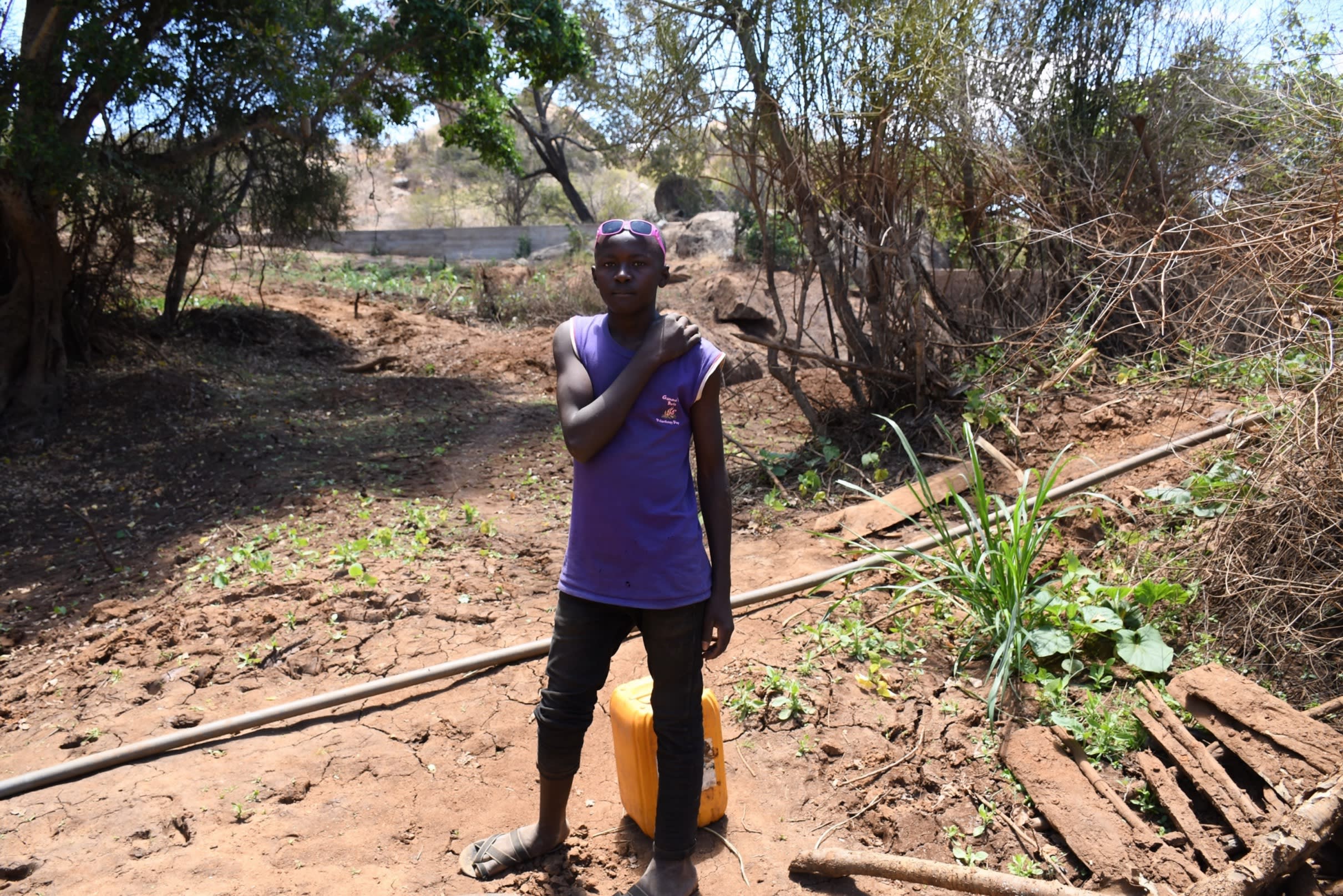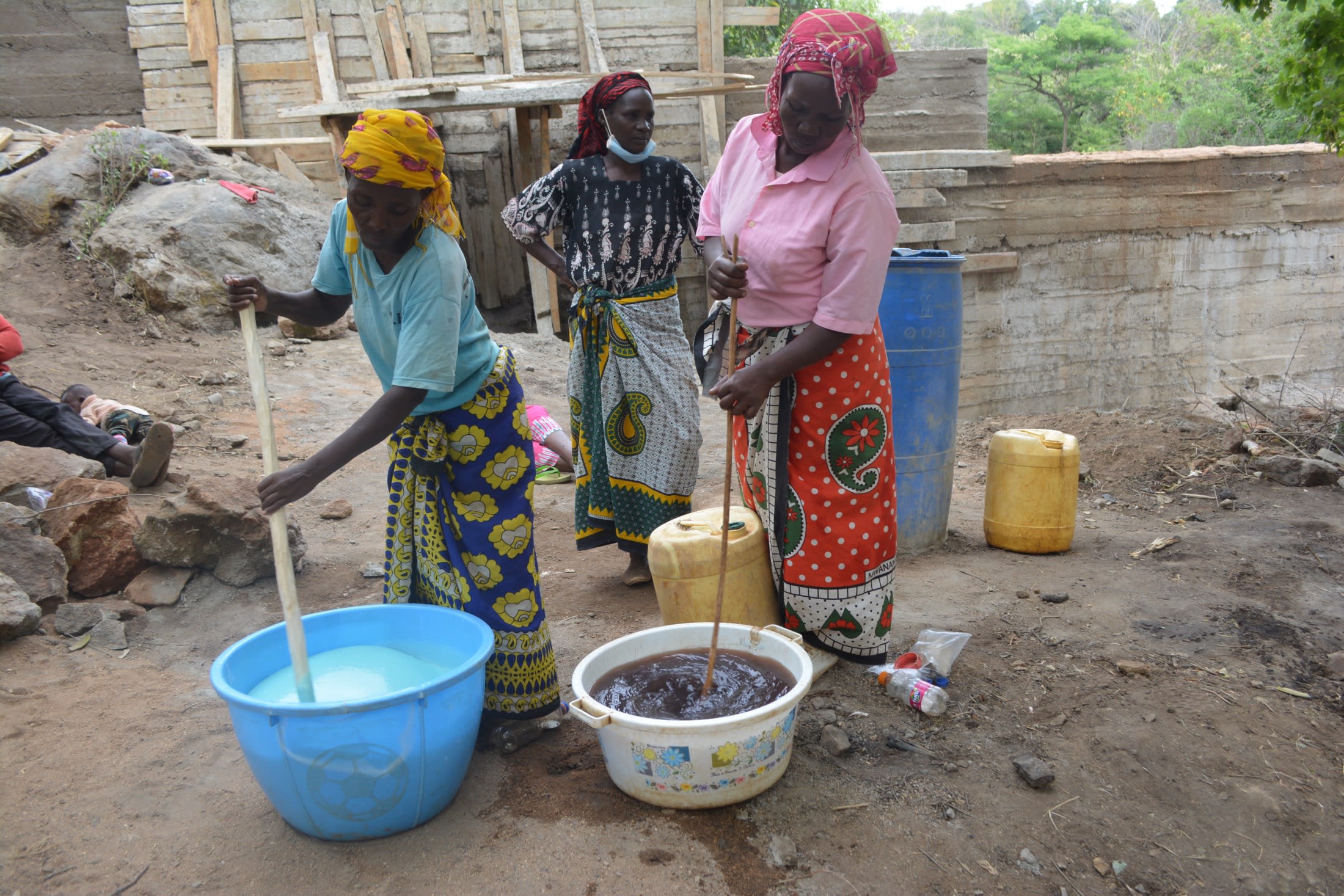Kithalani experiences long drought periods that force the area's residents to travel more than 5 miles to fetch water from the Tyaa River or dug scoop holes.
"Walking to this water point is exhausting since I have to carry the water manually," said Patrick M. (pictured below), who is 14 years old. "The hilly terrain and burning sun while walking to this water point also adds to the exhaustion."

Every day, the community members of Kithalani who live farthest from the water point wake up very early and leave their children for more than half a day as they trek out in search of water. Those who have enough money to purchase a donkey use it to carry water—otherwise, they lug full jerrycans back with them over the tedious distance. During this time, the older children pack themselves off to school while the younger ones wait for the parents to return and care for the livestock.
By the time the parents arrive back home, they are already exhausted. They have little energy to farm, cook, or clean. Without good farming, the families cannot earn an income or grow enough crops to feed themselves. They cannot pay for school fees or medication. The water from the scoop holes is contaminated, which has led to cases of typhoid, amoeba, dysentery, and cholera.
The proposed site for the well and sand dam is close to most of the community members' residences and easy to access. The community members have already started gathering materials for the construction of their water projects and are excited for bettering their lives.
What we can do:
Our main entry point into the community is the Lenza Mukuyuni Self-Help Group, which is comprised of households that are working together to address water and food scarcity in their region. These members will be our hands and feet in both constructing water projects and spreading the message of good hygiene and sanitation to everyone.
Sand Dam
After the community picked the ideal spot, our technical team went in and proved the viability by finding a good foundation of bedrock. Now, our engineers are busy drawing up the blueprints.
We are unified with this community to address the water shortage. As more sand dams are built, the environment will continue to transform. As the sand dams mature and build up more sand, the water tables will rise. Along with this sand dam, a hand-dug well will be installed to give community members an easy, safe way to access that water.
Building this sand dam along with the well in this community will help bring clean water closer to hundreds of people living here.
Training
These community members currently do their best to practice good hygiene and sanitation, but their severe lack of water has been a big hindrance to reaching their fullest potential.
We will hold hygiene and sanitation training sessions with the Lenza Mukuyuni Self-Help Group and other community members to teach about important hygiene practices and daily habits to establish at the personal, household, and community level. This training will help to ensure that participants have the knowledge they need to make the most out of their new water point as soon as water is flowing.
One of the most important topics we plan to cover is the handling, storage, and treatment of water. Having a clean water source will be extremely helpful, but it is useless if water gets contaminated by the time it is consumed. We will also emphasize the importance of handwashing.
We and the community strongly believe that all of these components will work together to improve living standards here, which will help to unlock the potential for these community members to live better, healthier lives.
We typically work with self-help groups for 3 to 5 years on multiple water projects. We will conduct follow-up visits and refresher trainings during this period and remain in contact with the group after all of the projects are completed to support their efforts to improve sanitation and hygiene.

 Sand Dam
Sand Dam
 Rehabilitation Project
Rehabilitation Project






























